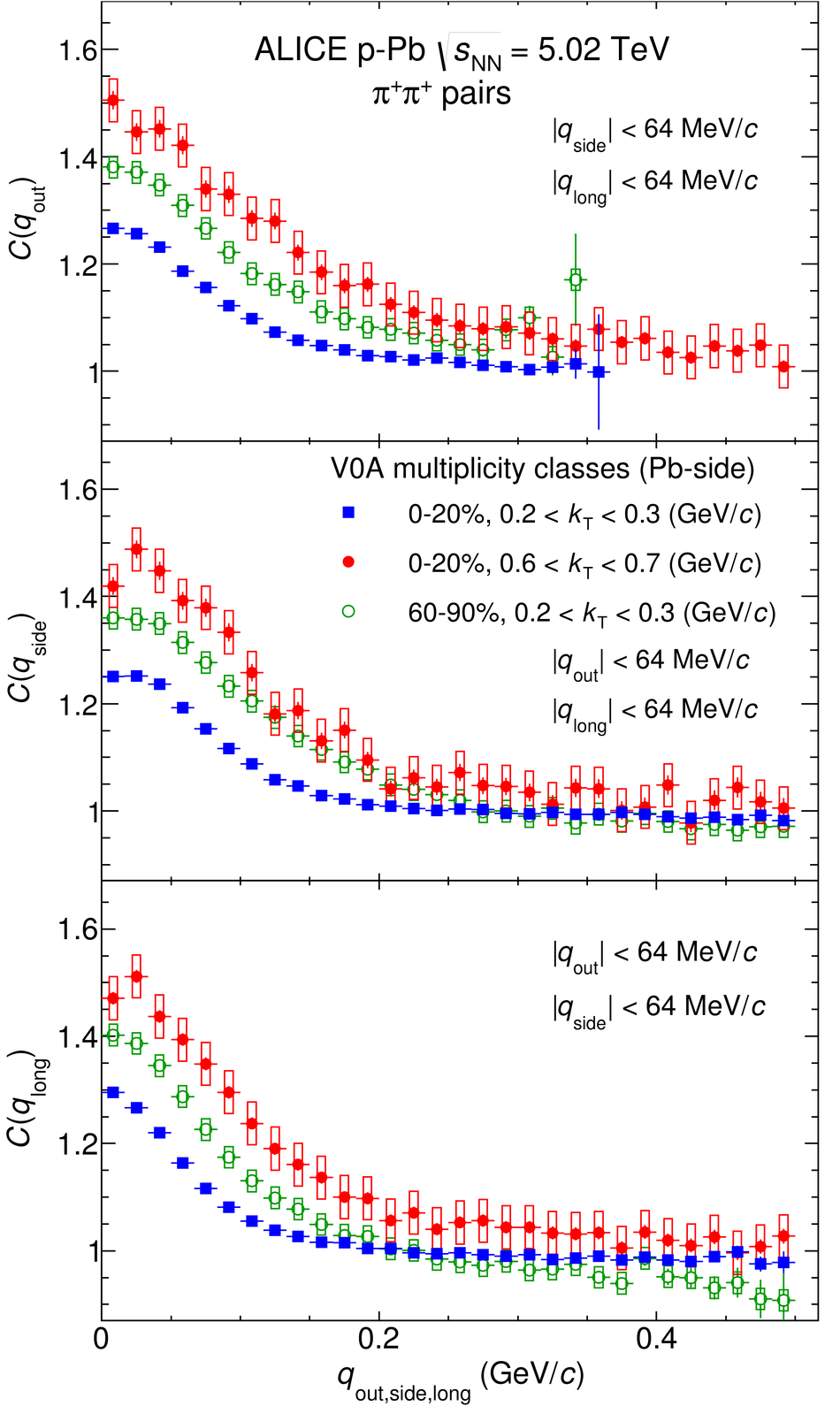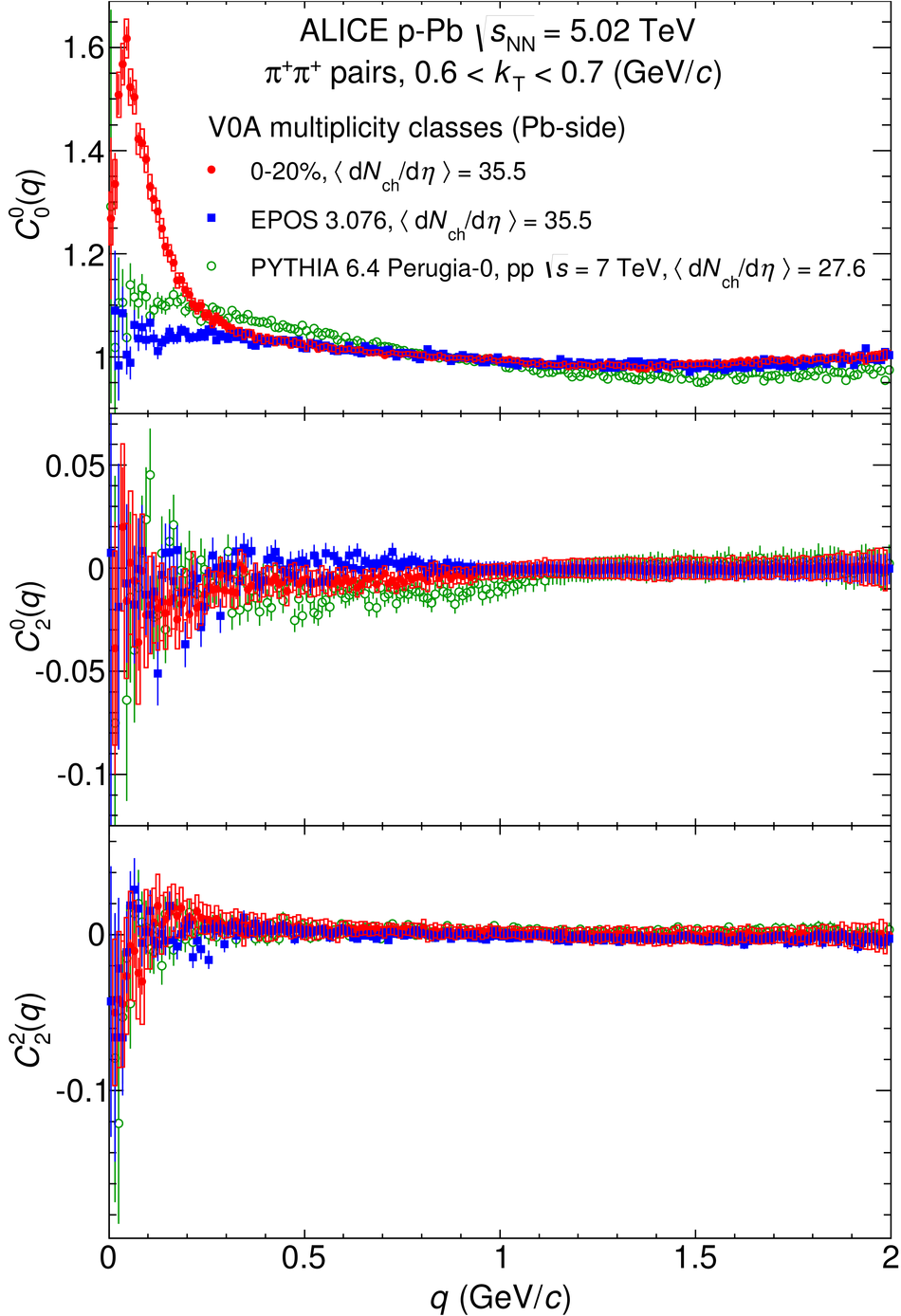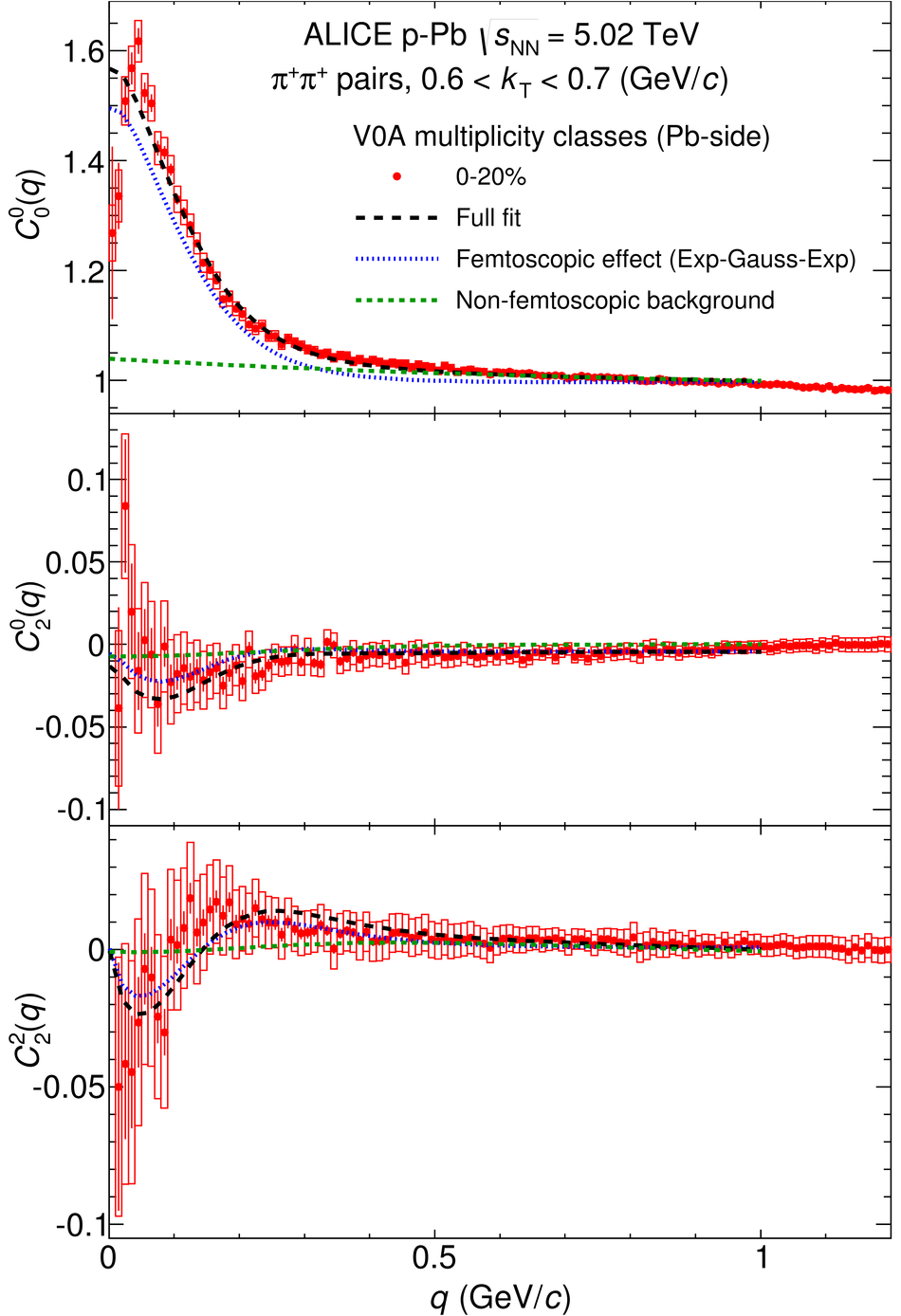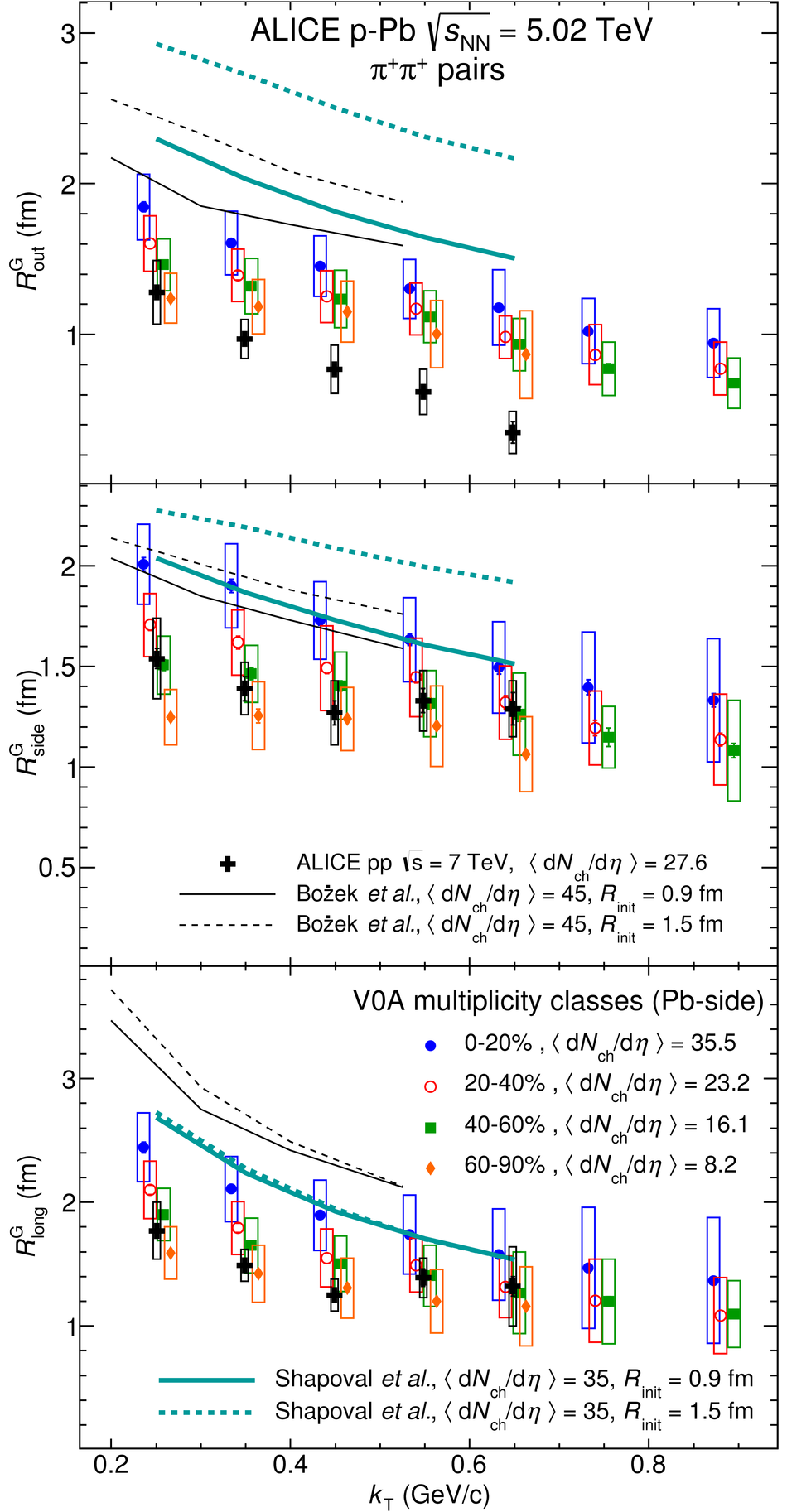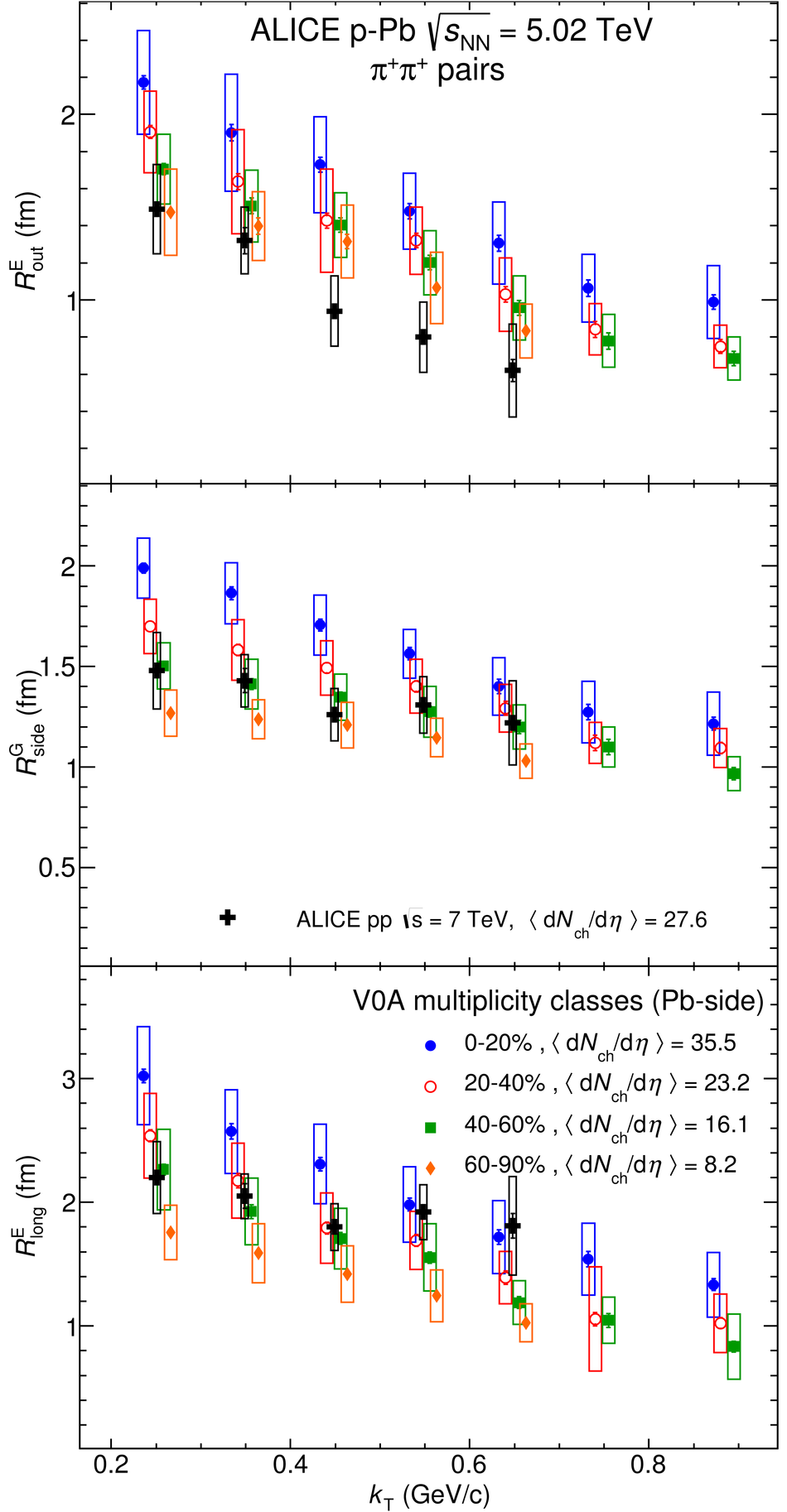We report the results of the femtoscopic analysis of pairs of identical pions measured in p-Pb collisions at $\sqrt{s_{\mathrm{NN}}}=5.02$ TeV. Femtoscopic radii are determined as a function of event multiplicity and pair momentum in three spatial dimensions. As in the pp collision system, the analysis is complicated by the presence of sizable background correlation structures in addition to the femtoscopic signal. The radii increase with event multiplicity and decrease with pair transverse momentum. When taken at comparable multiplicity, the radii measured in p-Pb collisions, at high multiplicity and low pair transverse momentum, are 10-20% higher than those observed in pp collisions but below those observed in A-A collisions. The results are compared to hydrodynamic predictions at large event multiplicity as well as discussed in the context of calculations based on gluon saturation.
Phys. Rev. C 91 (2015) 034906
HEP Data
e-Print: arXiv:1502.00559 | PDF | inSPIRE
CERN-PH-EP-2015-019

